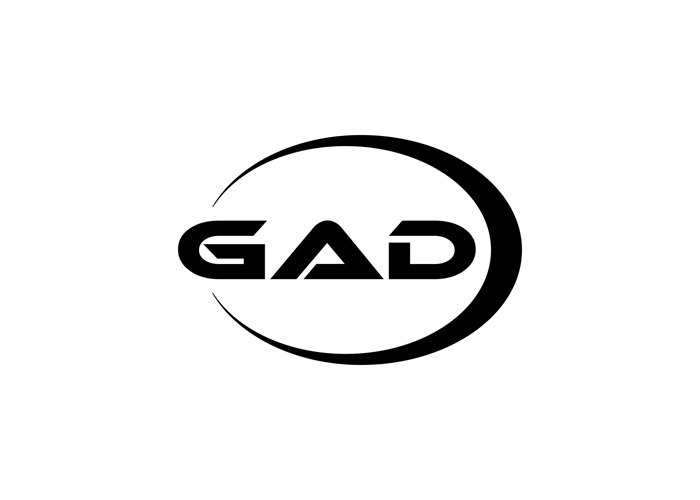The Core Principles: CBT is a widely recognized and evidence-based treatment for GAD. It focuses on identifying and changing negative thought patterns and behaviors that contribute to anxiety. The therapist helps the patient recognize automatic negative thoughts, such as catastrophic thinking or overgeneralization, and challenges them. For example, a person with GAD might constantly think “Everything is going to go wrong,” and the CBT therapist would work with them to examine the evidence for and against such a thought.
Techniques and Exercises: CBT for GAD often includes relaxation training, such as deep breathing exercises, progressive muscle relaxation, and guided imagery. These techniques help the patient to calm their body’s physiological stress response. Additionally, exposure therapy may be used, where the patient is gradually exposed to feared situations or stimuli in a controlled environment to reduce anxiety. Homework assignments are a common part of CBT, where patients practice the skills they learn in therapy in their daily lives. Studies have shown that CBT can significantly reduce anxiety symptoms and improve the quality of life for those with GAD.
2. Medication – Selective Serotonin Reuptake Inhibitors (SSRI)
How They Work: SSRIs are a class of antidepressant medications that are commonly prescribed for GAD. They work by increasing the levels of serotonin, a neurotransmitter, in the brain. Serotonin is involved in regulating mood, appetite, and sleep, among other functions. By increasing serotonin availability, SSRIs can help to reduce anxiety and improve overall well-being. For example, a commonly prescribed SSRI like sertraline (Zoloft) can take a few weeks to start showing significant effects, but over time, it can lead to a reduction in excessive worry, restlessness, and other GAD symptoms.
Benefits and Considerations: SSRIs are generally well-tolerated, with fewer side effects compared to some older classes of antidepressants. However, common side effects may include nausea, diarrhea, insomnia, or sexual dysfunction. It’s important for patients to work closely with their doctor to find the right dosage and manage any potential side effects. Long-term use may be necessary for some patients to maintain symptom relief, and regular follow-up appointments are crucial to monitor progress and adjust treatment if needed.
3. Medication – Benzodiazepines
Mechanism of Action: Benzodiazepines, such as alprazolam (Xanax) and lorazepam (Ativan), work by enhancing the effects of a neurotransmitter called gamma-aminobutyric acid (GABA). GABA has an inhibitory effect on the central nervous system, reducing neuronal excitability and thereby decreasing anxiety. They are fast-acting and can provide rapid relief from acute anxiety symptoms. For instance, in a situation where a person with GAD is experiencing a severe panic attack, a benzodiazepine can quickly calm them down.
Risks and Precautions: However, benzodiazepines carry a risk of dependence and tolerance. Long-term use can lead to physical and psychological dependence, and as the body becomes used to the drug, higher doses may be needed to achieve the same effect. They can also cause drowsiness, dizziness, and impaired coordination, which can affect a person’s ability to perform daily activities, especially tasks like driving. Therefore, they are usually prescribed for short-term use or in combination with other treatments like CBT, and careful monitoring by a healthcare provider is essential.
4. Mindfulness-Based Stress Reduction (MBSR)
The Concept and Practice: MBSR combines mindfulness meditation, body awareness, and yoga. The practice focuses on being present in the moment and observing thoughts and feelings without judgment. Through regular meditation practice, participants learn to become more aware of their anxious thoughts and how they affect their body. For example, a person in an MBSR program might notice that when they start to worry, their shoulders tense up, and by being aware of this, they can then use relaxation techniques to release the tension.
Effectiveness and Integration: Research has shown that MBSR can be effective in reducing anxiety symptoms in GAD. It can be used as a standalone treatment or in combination with other therapies. Many hospitals and mental health centers now offer MBSR courses. It helps patients to develop a different relationship with their anxiety, rather than trying to avoid or suppress it, and instead learning to accept and manage it in a more healthy way.
5. Exercise and Physical Activity
The Role of Exercise: Regular exercise is beneficial for both physical and mental health. For GAD, it helps to reduce stress hormones like cortisol and increase the production of endorphins, which are natural mood boosters. Activities such as aerobic exercise, like running, swimming, or cycling, can improve cardiovascular health and also have a positive impact on mental state. Strength training, such as weightlifting, can increase self-esteem and body confidence.
Recommended Guidelines: The American Heart Association recommends at least 150 minutes of moderate-intensity aerobic activity per week, along with two days of strength training. For someone with GAD, even a short daily walk can make a difference. Incorporating exercise into a daily routine can provide a natural and healthy way to manage anxiety symptoms and improve overall well-being. It can also serve as a distraction from worry and provide a sense of accomplishment.
Conclusion
Generalized Anxiety Disorder can be effectively managed with a combination of these treatment options. Cognitive Behavioral Therapy helps to change negative thought patterns, medications like SSRIs and benzodiazepines can address the chemical imbalances in the brain, Mindfulness-Based Stress Reduction offers a different way to approach and manage anxiety, and exercise provides a natural boost to mood and stress reduction. The best approach often involves a combination of these treatments, tailored to the individual’s specific needs and preferences. It’s important for those with GAD to work closely with a mental health professional to develop an appropriate treatment plan and to monitor progress over time.
Related topics
Navigating Treatment: The Best Drugs for GAD and Depression
Why Is My Anxiety & Depression Getting Worse?


